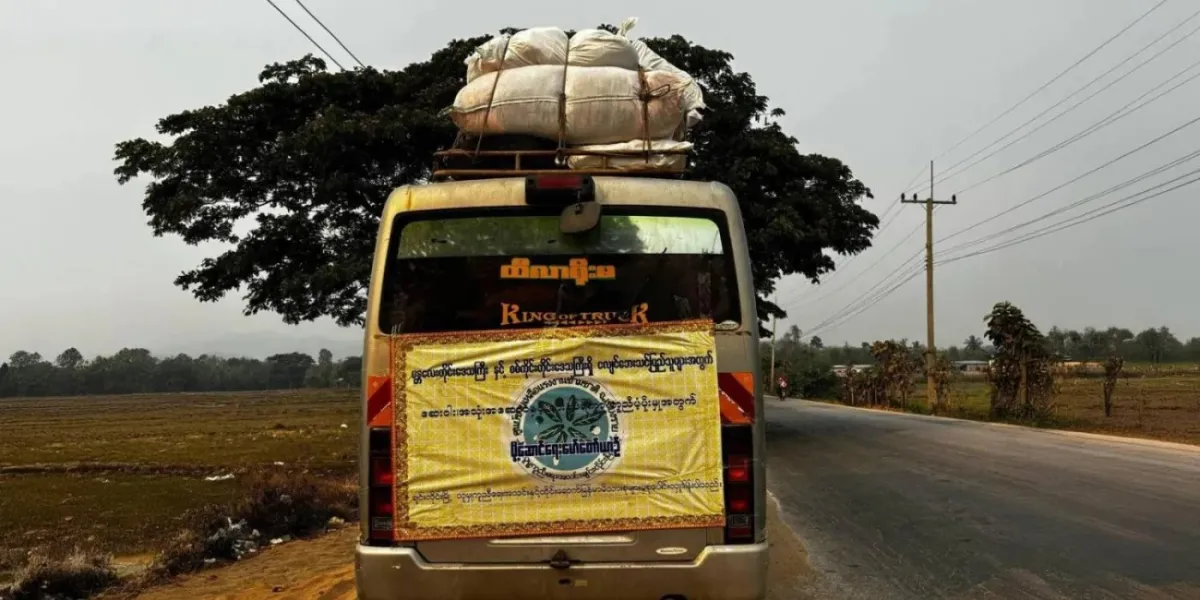This article was originally published on Prachatai.
Believing that aid sent through the Myanmar junta may never reach those truly in need, small groups of Thais and Myanmar nationals in Thailand are working tirelessly to collect donations and deliver them through grassroots networks.
Myanmar’s junta has been able to provide only limited assistance to the public, as it continues to wage civil war. The declared ceasefire has had little effect, with airstrikes continuing in areas controlled by opposition forces, including attacks on those affected by the disaster.
One month after the earthquake centred in Sagaing and Mandalay on 28 March 2025, the death toll had reached 4,461, with 11,366 injured, according to a Democratic Voice of Burma report, which cited data from the military government, the National Unity Government (NUG), and credible media sources.
While grassroots relief is believed to be one of the most effective ways to help, experts and organizers say these networks have to remain hidden from the Myanmar authorities, and some aid efforts are facing logistical challenges.
The junta’s obstruction and logistical obstacles have become even more restrictive as humanitarian aid efforts enter the rebuilding phase. Victims now need not only money and supplies, but also larger materials to rebuild their homes and lives.
From Samut Sakhon to Sagaing
“Normally, Friday is my day off. I was resting on the office sofa. But when I felt the tremors, I immediately knew what had happened,” said Ko Zaw, a 44-year-old man from Dawei.
Ko Zaw has lived in Thailand since his teenage years. At first, he didn’t speak a word of Thai, but after 20 years, he can communicate fluently without an interpreter.
Unlike many Thais who wondered if they were just dizzy, he knew immediately it was an earthquake as he had experienced milder tremors in Mandalay.
The next day, he and about six friends began collecting donations and raised 10,000 baht (about US$310). As of May, the total has reached 400,000 baht (about US$12,400), not a small amount, considering it was raised by migrant workers who themselves face many hardships in Thailand.
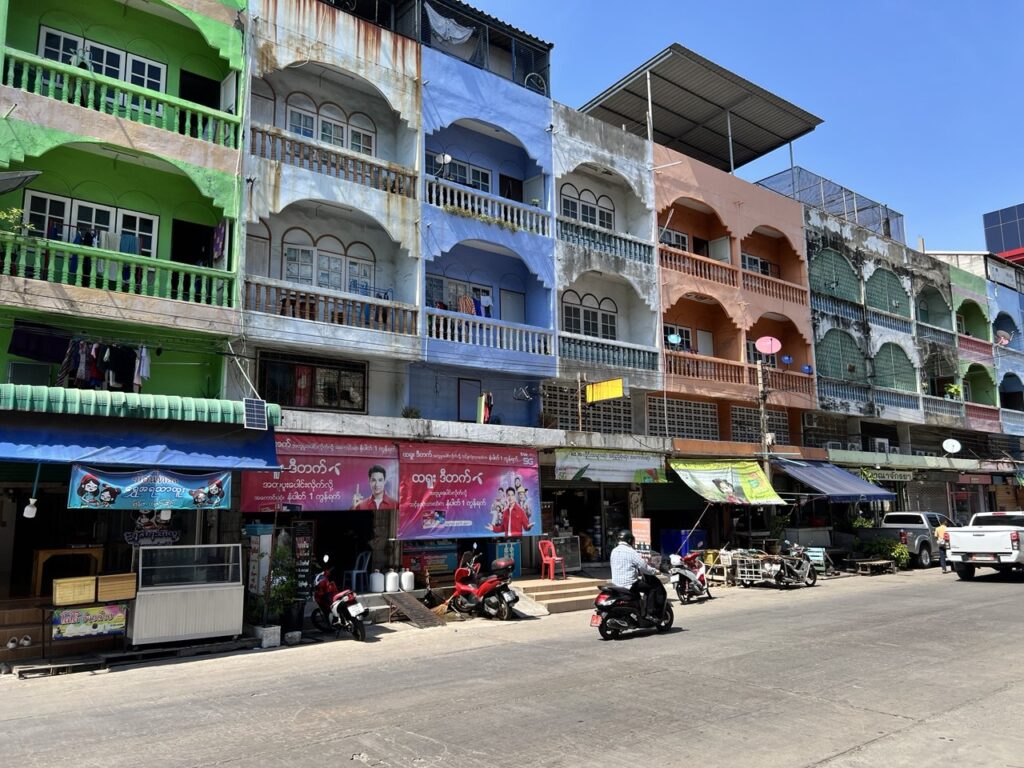
Ko Zaw said some donated just a few hundred baht via bank transfer, while others drove over to hand in cash directly. In some factories or companies, workers pooled their money to contribute amounts in the thousands or even tens of thousands of baht.
A portion of the donations raised by Ko Zaw’s group was allocated to support the relatives of migrant workers who were trapped in the ruins of the State Audit Office building in Bangkok, which collapsed as a result of the same earthquake. Since the day of the disaster, these families have taken time off work, gripped by fear for their loved ones. As a result, they’ve lost income and remain uncertain about their job security.
The collapse led to 88 confirmed deaths, 9 injuries, and 12 people still missing as of May 6, according to Thai PBS. The currently investigation is looking at corruption involving Chinese ownership of companies and substandard construction practices.
Ko Zaw said his group distributed funds to Sagaing and Mandalay through officials of the NUG, the civilian government-in-exile. He added that they also sent additional aid to Sagaing via members of the People’s Defence Force, the NUG’s armed wing.
Currently, most of the Sagaing region is under the control of pro-democracy resistance forces. According to a 2024 BBC investigation, “the military only has full control of 21% of Myanmar’s territory,” while “ethnic armies and a patchwork of resistance groups now control 42% of the country’s land mass.”
Mistrusting the junta
When asked why he chose to send funds to the resistance, Ko Zaw replied immediately: to him, not trusting the junta is just common sense.
“Everyone knows that for the more than 70 years that Burma has had military governments, they put money into their pockets. They don’t help the people and we can’t check.”
To prove the resistance’s trustworthiness, he showed photos of the donations being handed over by them, with the faces in the images blurred in advance.
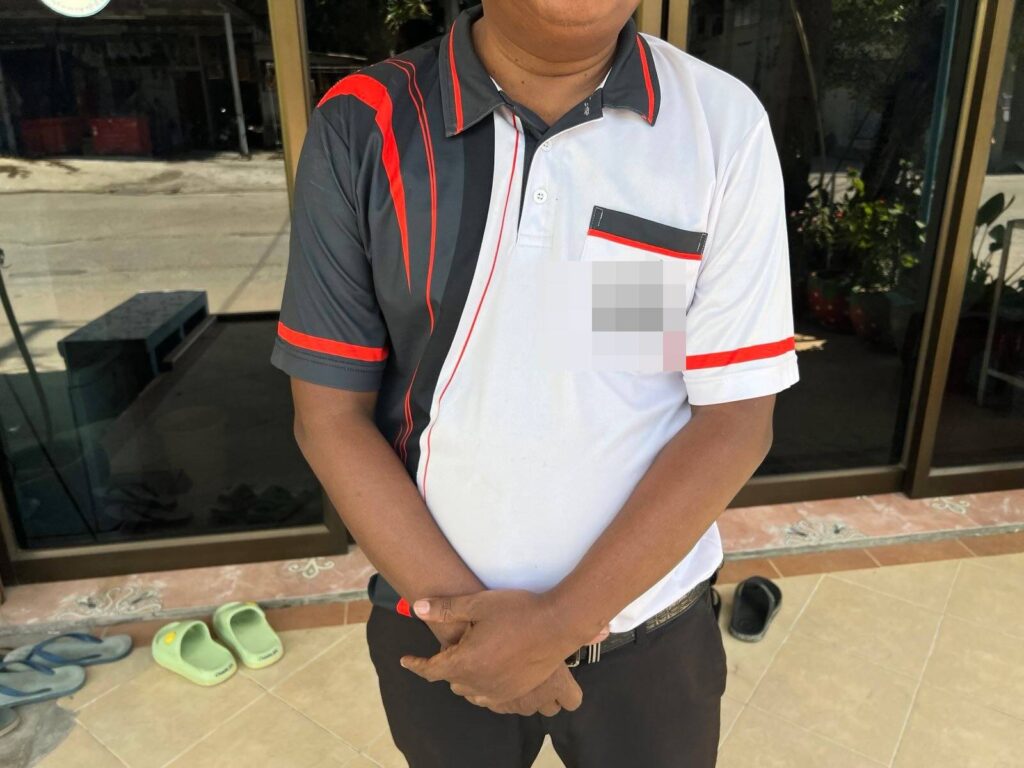
According to the BBC, Myanmar’s military government, which has been waging a civil war since the 2021 coup, has a history of weaponizing aid and humanitarian assistance against its opponents.
In past natural disasters, such as Cyclone Mocha in 2023 and Typhoon Yagi in 2024, which claimed hundreds of lives, the military obstructed relief efforts in opposition-held areas by blocking supply deliveries at customs checkpoints, denying travel permits to aid workers, and maintaining restrictions on life-saving assistance.
“We have witnessed the humanitarian crisis intensify throughout 2024, with more than 3.5 million people internally displaced, fleeing the violence of the Myanmar military,” said Khin Omar, a founder of the human rights organization Progressive Voice, at a public forum marking one month since the earthquake, organized by the Faculty of Social Sciences, Chiang Mai University.
“However, this group has received very little humanitarian assistance from the international community. They are forced to flee airstrikes and conflict situations, and the military has blocked aid which should be sent to those fleeing the war.
“There is only support from like-minded donors. In addition, there are donors working with civil society and organizations in local communities, health service providers of ethnic groups, or what can be called informal cross-border assistance. This has proven to be the most effective method of delivering aid to the most vulnerable groups in the country over the past four years.”
Key players: workers’ communities
In Chiang Mai, an area with a sizable Myanmar migrant population, Sanimthoon (“Capital’s Rust”), a small Burmese restaurant, has become a key player in coordinating grassroots humanitarian aid efforts.
Five days after the earthquake, its Facebook page announced to donors that the amount of donations sent to each area would depend on the conditions in that area and the distributive capacity of the volunteer network. Most of the local volunteers are young people who face the risk of arrest or forced conscription.
Sanimthoon regularly provides updates on the ongoing aid efforts, including the transfer of funds through labour networks in Sagaing and Mandalay, and through teacher groups in Naypyidaw for further distribution. They also inform donors about what the transferred money will cover, including emergency shelters, mosquito nets, and water filters for remote villages, as well as the cost of transporting medicine from Thailand to Myanmar.
In these updates, the names of volunteers, communities, and local organizations in Myanmar are not disclosed for safety reasons. However, the names of organizations and networks in Thailand will be given with their consent to ensure transparency.
“Regarding the money transfers, we keep the names and identities of the recipient organizations confidential for safety reasons. Sometimes, we can transfer money directly to volunteers, but at other times, we have to go through intermediaries in Thailand because the area is difficult, and even the representatives in Myanmar are at risk.”
“Even taking pictures of the donated money could be used by the Myanmar military as evidence to make arrests. Therefore, we do not ask volunteers to send back pictures of the donations. If it’s OK for them to send pictures back later, they must also rely on an internet connection.”
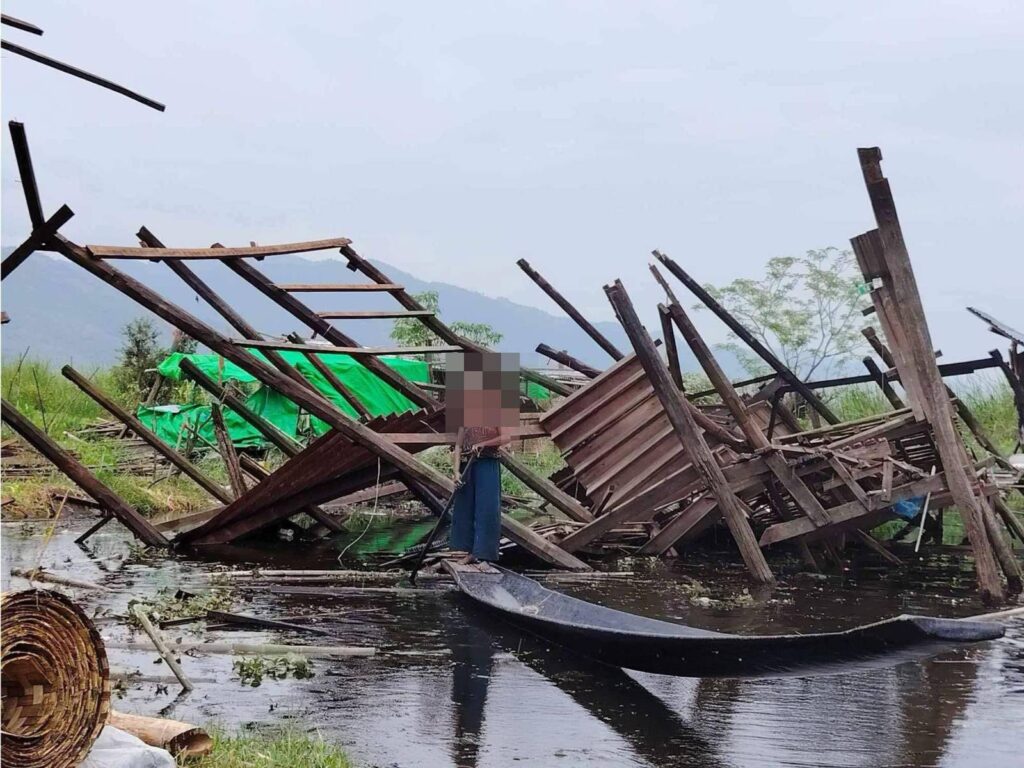
Logistical challenges
Dr Suebsakun Kidnukorn, a lecturer at the School of Social Innovation, Mae Fah Luang University, and coordinator of the Chiang Rai Migrant Workers Assistance Center, which he founded during the COVID-19 pandemic, said that humanitarian aid for earthquake victims in Myanmar has now entered the rebuilding phase, with a particular focus on housing.
This includes both severely damaged areas that need to be rebuilt and those that can still be repaired. At present, the most urgently needed items are mosquito nets, blankets, and materials for home repairs. However, when it comes to larger repair tools, transportation becomes a challenge for grassroots communities, making government-to-government agreements essential.
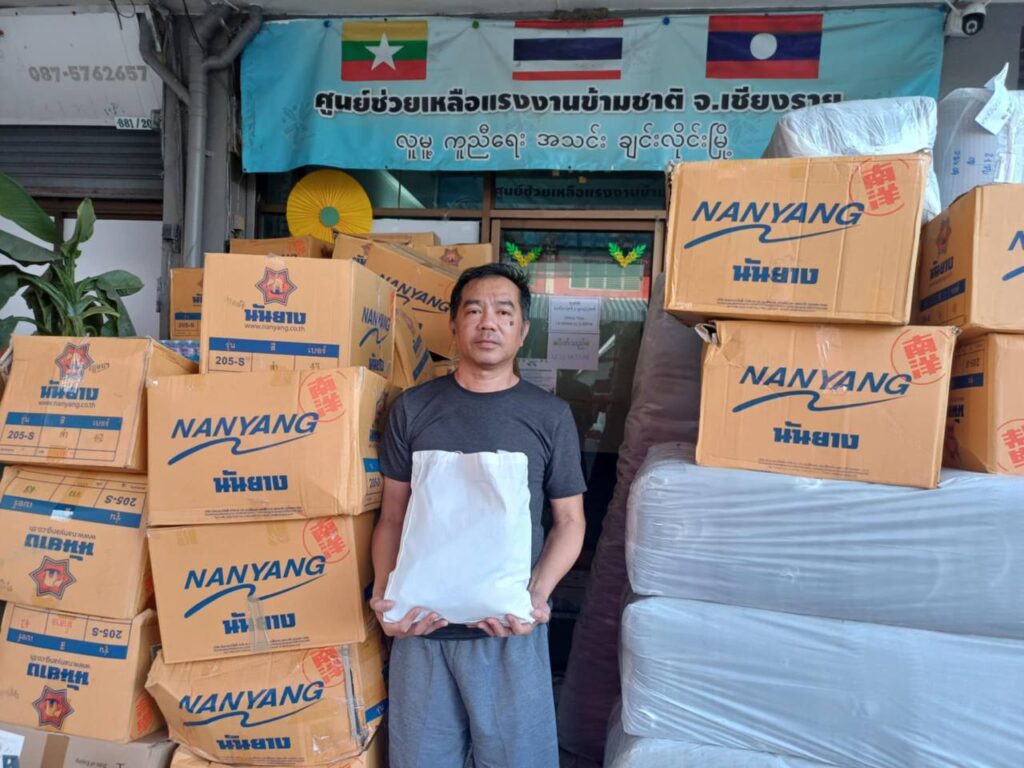
He recalls that shortly after the earthquake, the Chiang Rai Migrant Worker Assistance Center launched an emergency relief drive, collecting rice, dry foods, shrouds, and money. The initiative received strong support from the Myanmar migrant worker network and Myanmar students in Chiang Rai.
Relief items from the Center were sent to communities in Mandalay and Sagaing, the hardest-hit regions, including the town of Kyaukse in Mandalay.
Thailand’s Chiang Rai borders the town of Tachileik in Myanmar’s Shan State. From there, goods can be transported by truck via National Highway 4, passing through Taunggyi and continuing to Mandalay. Although this route does not pass through conflict zones, it takes more than three days to reach the destination.
The biggest obstacle to this effort are road conditions in Myanmar, which were severely damaged by the 2024 floods.
“We coordinate with local organizations who provide assistance. The trucks carry visible signs, and transport visible items. There are certification letters [from the receiving organizations at the destination].”
Dr Suebsakun confirmed that the aid delivery does not go through the military government, but the names of the receiving organizations are withheld for security reasons.
According to The Guardian, the Myanmar junta is “accused of blocking aid for earthquake victims as airstrikes continue,” with doctors involved in the disaster aftermath and a UN special rapporteur reporting that aid is disappearing or being blocked in some areas.
“Outside of the major cities, the military already checks and then tries to block the flow of aid,” said Dr Tun Aung Shwe, a medical doctor and NUG’s representative in Australia. “They’re finding other ways. So it’s getting there, but it’s taking longer.”
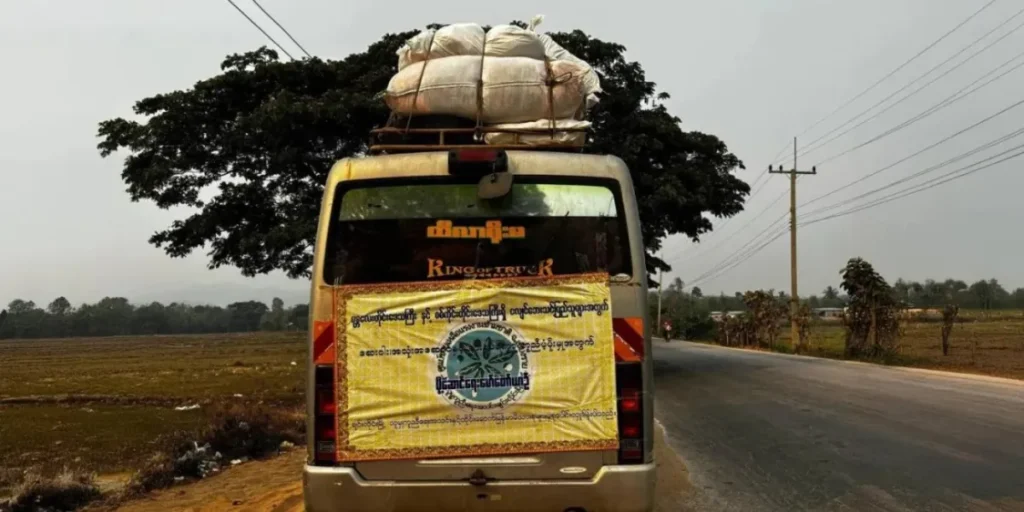
Ceasefire that never happened
On April 2, the military government first announced a temporary halt to military operations against the opposition forces, but attacks continued to occur every day.
According to data from the United Nations High Commissioner for Human Rights, from the time of the earthquake until 29 April, the military launched at least 243 attacks, including 171 airstrikes, and more than 200 civilians were killed.
The English-language service of Democratic Voice of Burma News reported that since the earthquake until 7 May, the military government has carried out 516 airstrikes and artillery attacks nationwide. Of these, 385 occurred during the temporary ceasefire declared by the government. These attacks resulted in at least 346 deaths and 703 injuries.
On May 6, the military government announced an extension of the temporary ceasefire until the end of May.
The role Thailand and ASEAN
After the first ceasefire announcement, Senior General Min Aung Hlaing, Chairman of the State Administration Council (SAC) and President of Myanmar, attended the BIMSTEC leaders’ summit hosted by Thailand on April 3–4.
This marked Min Aung Hlaing’s first official visit to Thailand since the February 2021 coup, following years of pushback from civil society and the international community.
Thailand’s invitation to the Myanmar coup leader to attend the BIMSTEC was met with a student protest. Many criticized Thailand for legitimizing the SAC and violating ASEAN’s agreement not to engage with the Myanmar coup leaders except in accordance with the Five-Point Consensus.
On April 17-18, Malaysian Prime Minister Anwar Ibrahim, the ASEAN chair for 2025, used the BIMSTEC meeting as a venue to discuss peace and humanitarian aid efforts following the earthquake in Myanmar.
Prime Minister Anwar discussed with Min Aung Hlaing the necessity of ending the war and committing to the ceasefire agreement to ensure that emergency aid could reach all affected communities without obstruction.
Online talks were also held with Mahn Win Khaing Than, Prime Minister of the NUG, for 40 minutes to discuss the escalating humanitarian crisis and ways to ensure the effective delivery of aid to affected communities.
This report is supported by IOM through the Migration Reporting Grant Program.
